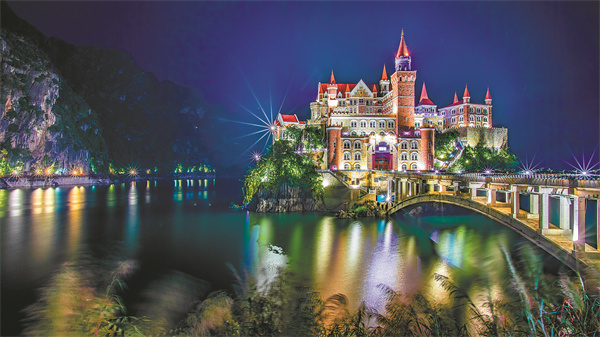

Xingyi's appeal extends beyond its climate and geopolitical location. Karst mountains reach toward the sky like ten thousand fingers grasping at clouds. Sculpted solely by the forces of nature into a "Karst Museum", Xingyi offers an array of landscapes that seem crafted by divine intervention: cone peaks, deep gorges, hidden valleys and secretive caves.
Xingyi's rich tapestry of geological landscapes led to the establishment of the Xingyi Geopark. It centers around significant historical sites of marine reptile fossils, crucial for understanding biological evolution, and a monumental karst landscape featuring cone-shaped peaks and soluble rock formations. The geopark spans an impressive area of 1,456.10 square kilometers and encompasses renowned attractions like the Maling River Canyon Scenic Area, Wanfeng Lake, Wanfenglin Scenic Area, Nidang Stone Forest, and Dingxiao Guizhou Dragon Scenic Area.
Xingyi's designation as a national geological park holds a special place in Wei's heart, particularly because it is the discovery site of the "Guizhou Dragon", a prehistoric marine reptile. "Seeing dragon motifs around the city feels like a personal connection for me, being born in the year of the dragon," she explains.
For those interested in geology and paleontology, Xingyi does not disappoint. The geopark enables one to explore the Triassic Period fossil sites that have contributed significantly to understanding prehistoric life on Earth.
Guizhou Daily reports that during the 2024 Dragon Year, "Dragon Year, Seeking Dragons" has become a popular topic at the Xingyi Geopark Museum.
According to statistics, the museum has welcomed approximately 20,000 young people for study visits this year.